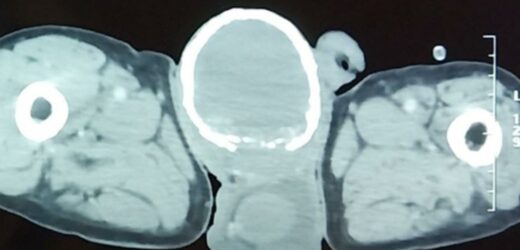A MAN was left with a swollen and 'stony hard' testicle – after developing a parasitic worm infection.
The 80-year-old, from India, went to see his doctor because he thought he had a urinary tract infection (UTI).
He explained that he had blood in his urine and it was painful when he peed, according to a paper, published last week in BMJ Reports.
Medics examined the patient, who hasn't been identified, and discovered that his right testicle was "grossly enlarged" and "stony hard".
They carried out CT scans which revealed that he had a fluid-filled sac around his testicle which had begun to calcify like an "eggshell".
It's called a hydrocele and is something that can often show up in newborns and disappears by the time they turn one.
In older men it usually develops in response to an infection or injury.
Parasitic worm
The doctors began to suspect that the man may have been infested with a a species of filarial worm, which tend to be found in hotter regions of the world.
They are spread to people as larva from a mosquito bite before migrating to the lymph nodes, including ones near the scrotum.
Initially, some may experience symptoms that are similar to flu, while most will feel nothing.
But if an infection goes untreated, the larva produced by adult worms can go on to block some important lymphatic vessels.
Painful
Known as lymphatic filariasis, this can trigger bouts of painful swelling and make people more susceptible to infections.
When ignored for long enough, the swelling can permanently disfigure the affected parts of the body – known as elephantiasis.
Lymphatic filariasis is endemic in India, where the man lives, and contributes about 40 per cent of the total global burden, according to study authors.
These infections are the most common cause of hydrocele in men in these areas, however the “eggshell calcification” of the man’s testicle is an extremely rare complication.
MORE ON HEALTH
QUICK THINKING I called 999 when my husband got indigestion and it saved his life
I’m a fat wife – trolls say my husband must be cheating
I’m a Dr & here’s 5 headache red flag symptoms that mean you need medical help
All you need to know about being eligible for Medicaid
The medical team say that it is likely the result of a very long infection within the sac, one that caused calcium to form around it.
They said: "The infection can be treated with drugs.
"However, chronic conditions may not be curable by antifilarial drugs and require other measures, for example, surgery."
Source: Read Full Article








